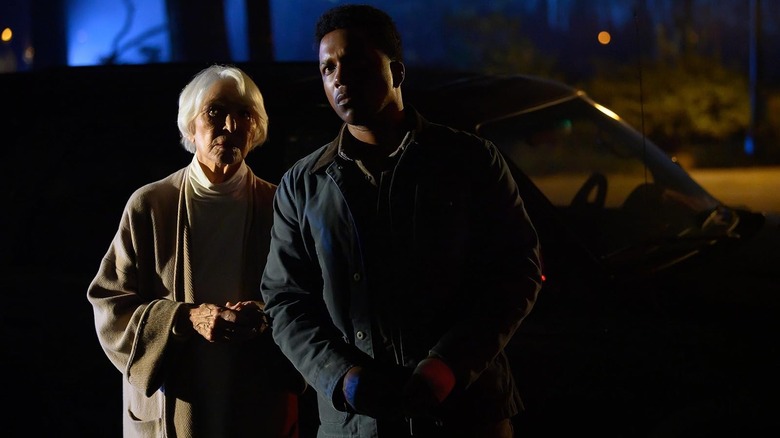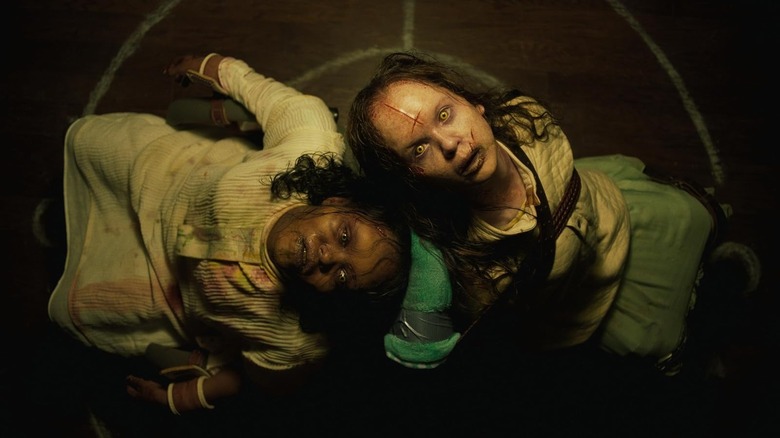How The Exorcist: Believer Director David Gordon Green Shifted Horror Gears After Halloween [Exclusive]
Could anyone have foreseen the legitimately fascinating trajectory of David Gordon Green's career as a director? After helming gritty, dramatic fare like "George Washington" and "All the Real Girls" as a newbie filmmaker, Green suddenly pivoted hard in the opposite direction, tackling the genre-blending stoner flicks "Pineapple Express" and "Your Highness." He would only branch out further from there, trying his hand at everything from uplifting true-story films ("Stronger") to grounded crime dramas ("Joe"), darkly satirical TV series ("Vice Principals," "The Righteous Gemstones"), and even heavily-fictionalized, anachronism-infested biographical series with big Millennial energy ("Dickinson").
Green has since continued this trend of swerving from one type of storytelling to a radically different one with "The Exorcist: Believer" (read /Film's review), a legacy sequel to William Friedkin's OG "Exorcist" and the follow-up to Green's divisive "Halloween" trilogy. While they may both reside in the horror genre, the gonzo slasher universe of the "Halloween" franchise is a far cry from the existentially unsettling and otherwise deadly serious world of "The Exorcist" (its unintended comedy aside). Speaking to /Film's BJ Colangelo, Green explained how his approach to "Believer" differed from the one he took to "Halloween":
"Yeah, it's prioritizing character, the depth, and substance of our text. It was very researched. With this type of format, you're not trying to outdo the wildest kill you can imagine. You're not trying to engineer the most startling jump scare. You're trying to make something that gets under your skin. And if I've done my job right, then it's a movie that people will talk about afterwards. It's not just a thrill ride rollercoaster that you get off and have a laugh and grab a slice of pizza. It's something that you do have your own conversations and controversies and wake up the next day thinking 'What if?'"
Something relatable to a world 'that may or may not f*** with demons'
The power of the original "Exorcist" is two-fold. Whether you're scared by the fundamental concept of demons (even if you don't actually believe they're real) or more distressed by the unknowable forces that govern our daily lives (things like chance and luck), Friedkin's film and William Peter Blatty's original novel both have the power to rattle your cage something fierce. Green was careful to consider this as he went about developing "Believer" with his collaborators. In his words:
"I'm trying to make something that is distinctive, but also really relatable to a world that may or may not f*** with demons. They may relate to it in a way of mental illness or addiction or some of these things that we can see. And I'm actually inspired by a lot of the words in William Peter Blatty's original book, the novel, 'The Exorcist,' that aren't in the movie, but it's talking about possession and the other things, the little things. Things that we see every day, behavior that we see in people that we can't explain. So I want to make sure that the movie has enough of those intimate nuggets of possession so that it's not just head-spinning and levitation. It's got something a little bit more grounded to accompany that."
For me personally, it's that spiritual dread Green discussed that resonated with me more than the paranormal aspects of "The Exorcist." In fact, the supernatural mayhem is almost a relief when it arrives in the film's second half. Foul-mouthed crackling demons? They're a hoot. A child possibly being in the grips of a newfound disease or dealing with severe mental illness? Now that's the stuff of nightmares.
"The Exorcist: Believer" is now playing in theaters.

